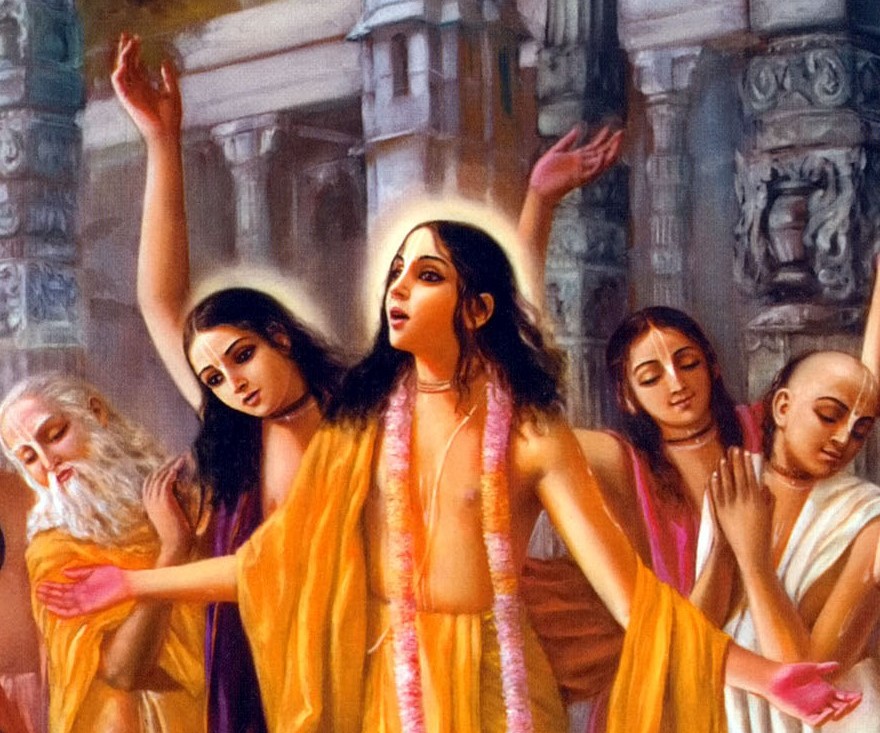
In 1972 I was working as a psychiatric nurse at a big psychiatric hospital in Sydney. I was living with a bunch of hippies, but I was a failure as a hippy because I had a job. I was twenty at the time, and one of the guys I was living with was in his thirties. He was sort of into silent meditation and had previously been to India, and the two of us wanted to do astanga or kundalini yoga, and there was no one we could find in Australia to teach us. Looking back, I have to admit I was at least partly trying to culivate an image for myself of being a spiritual dude.
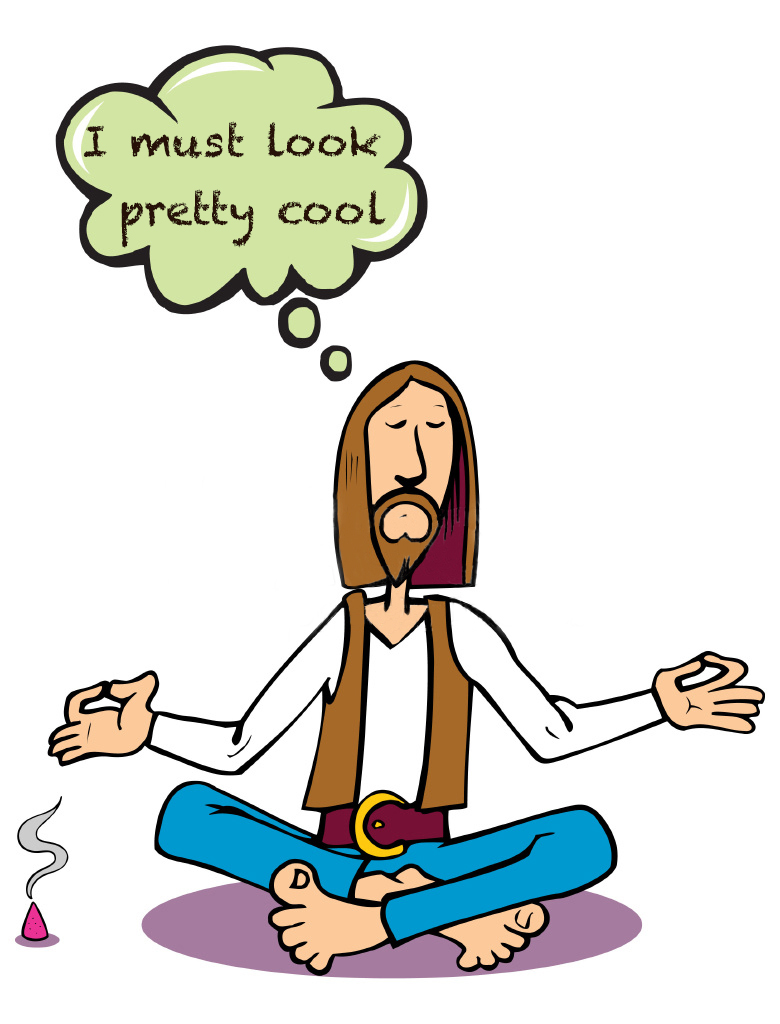
So, we were saving up to go to India to find a guru. Little did we know that India was full of people whose business was pretending to be enlightened gurus. They make a living out of this business of cheating others, and simply create havoc and confusion for spiritual seekers. The reason I was interested in meditation was the same reason I had started working as a psych nurse – I felt empty, that there was something deeply missing in my life and I was looking for answers. I didn’t know why I was unhappy and always had some degree of anxiety burning away inside of me. I didn’t find the answer in psychiatry, and noticed that most of the psychiatrists at the hospital were as screwed up as their patients and relied heavily on drugs and alcohol to cope with life.
I was reading a book by a famous yogi and he described how as a young man he wanted to leave home and go to the Himalayas to find a guru, but his parents wouldn’t let him go. And then he was walking down a street near where he lived and ran into a man who became his guru. He said that when you’re so determined to find a guru that you’re prepared to go all the way to the Himalayas, you’ll find one just around the corner. At the time I read this, I saw a poster saying that Bhaktivedanta Swami Prabhupad, an Indian guru who was teaching bhakti yoga, was giving a talk at a temple that was just around the corner from where I lived. I thought “Wow, that’s just like I read in the book. I’ll go and see what he has to say.”
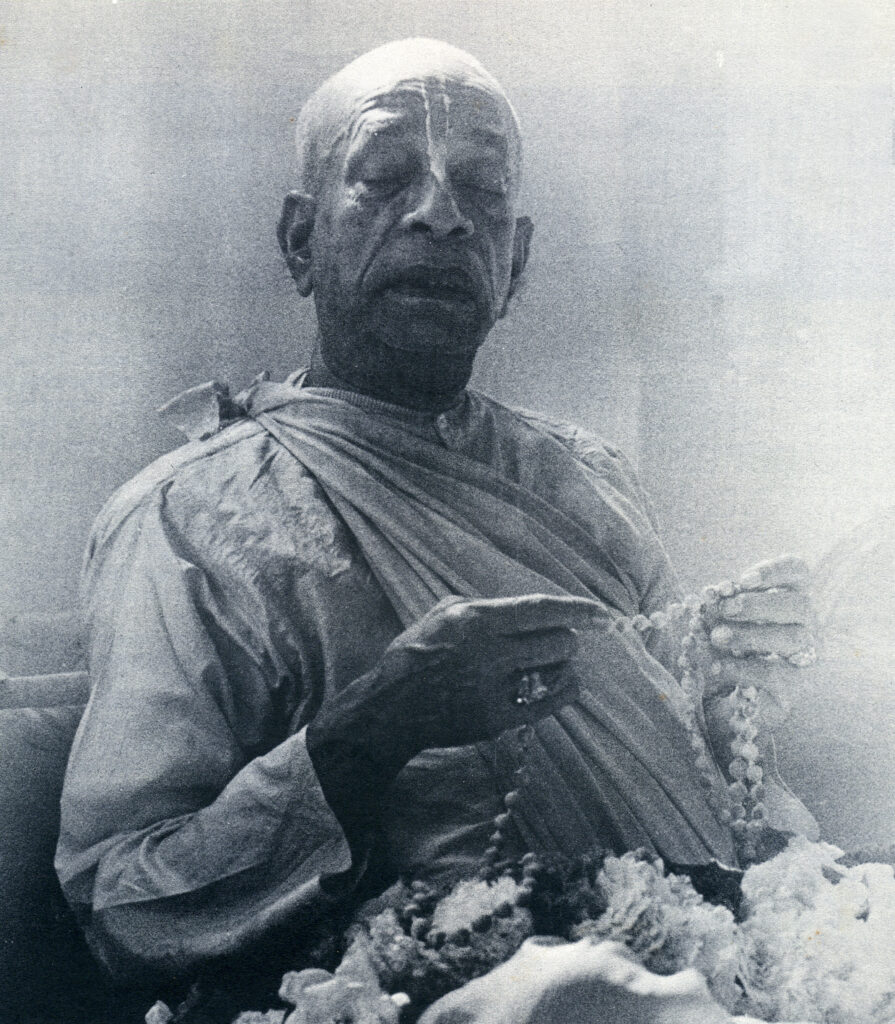
I went along to the temple, and there was Srila Bhaktivedanta Swami sitting on a seat in the backyard of the temple, under a makeshift shelter of palm fronds. He had his eyes closed, and was chanting on beads. He was surrounded by his disciples, and there was a large group of people, largely hippies, standing around watching. I stood at the back. I was wondering “Is this my guru? How could I tell? I had no idea at that time what a guru actually was, what his qualities and activities would be. Because of some of the weird books I had read, I thought he would be someone who levitated or walked on water or whose interest was in developing some sort of psychic powers.
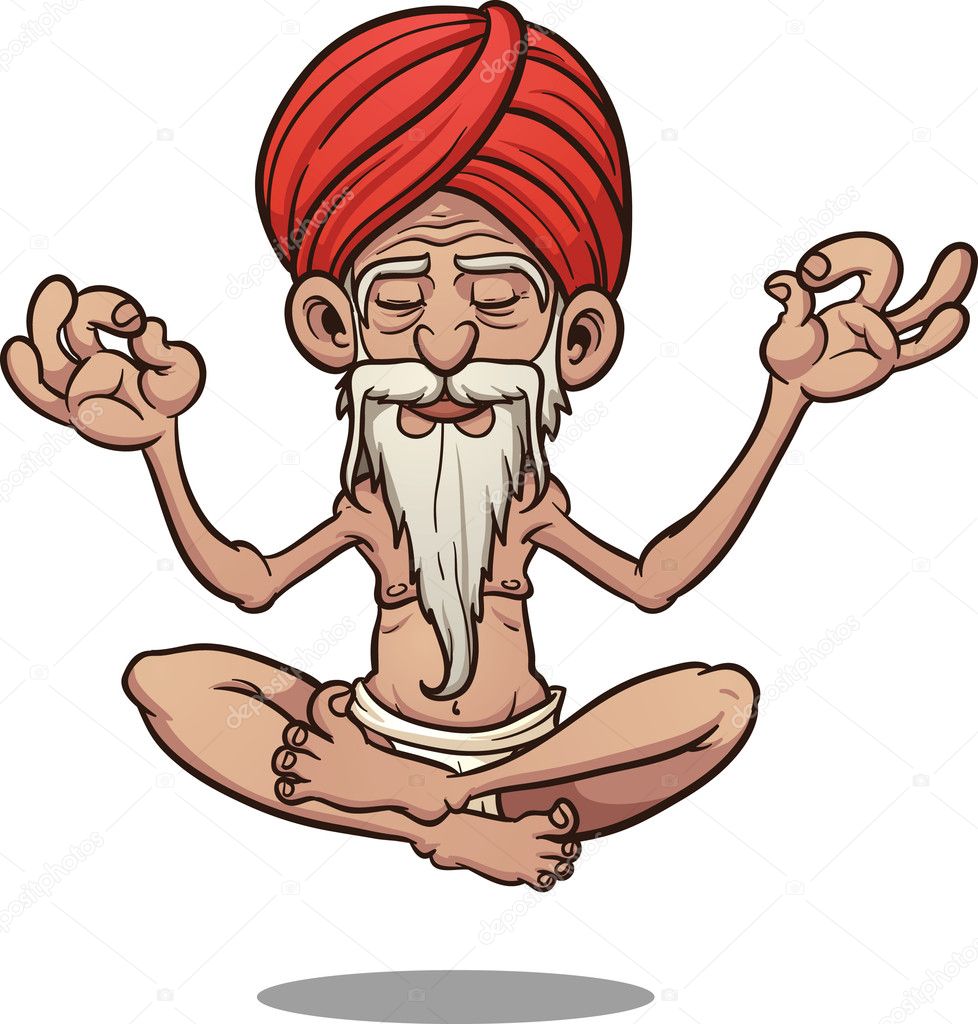
I didn’t understand at that time that a guru was someone who had perfect love for the Supreme Soul and whose life’s mission was to help others to find the highest happiness, by teaching them that we are all spirit souls, sparks of the Supreme Soul, and that we can only be truly happy when we are reestablished in our long-lost relationship with Him. This is the actual meaning of yoga, the linking up of the individual soul with the Supreme Soul.
Not knowing what a guru was or how to tell if this man was a genuine guru, I tried to send him psychic messages – “Are you my guru? Are you my guru?” He opened his eyes and looked straight at me, and I knew that he saw what was in my heart, and then he closed his eyes and returned to his chanting. He looked amazingly dignified, peaceful and effulgent. But I later learnt that you see a guru with your ears, not with your eyes. The greatest gift is the great wisdom of an enlightened soul’s words – their ability to change our hearts and inspire us to love the Supreme Soul and see all others as His children, as eternal spiritual beings, as our brothers and sisters.
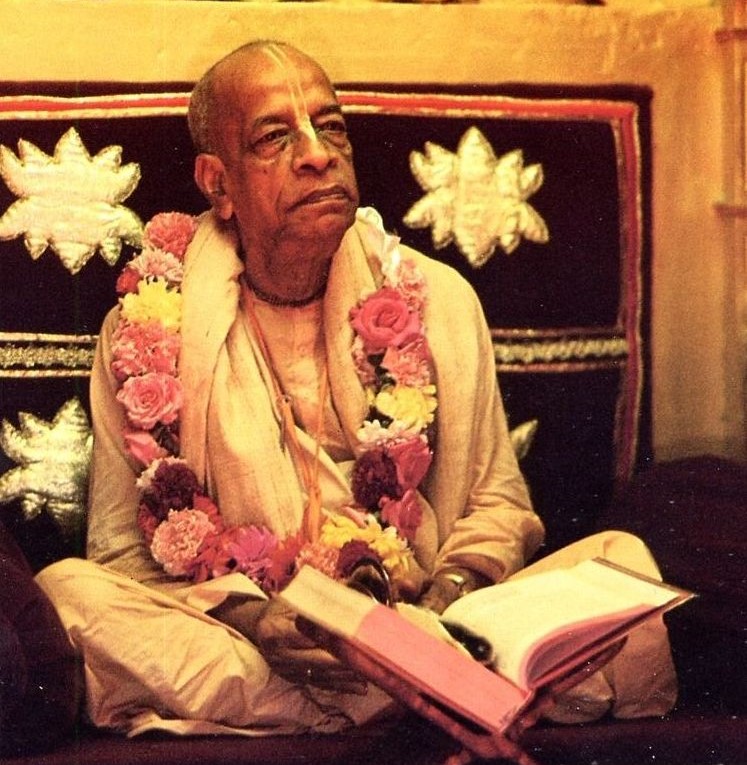
I heard Srila Bhaktivedanta Swami speak that day. He spoke from the Bhagavad-gita on divine and demoniac natures, and said, “Everyone is either a devotee or a demon.” I remember thinking, “I must be a devotee then.” At that point I had not realized that I was more of a demon. But I gradually started to apply his teachings to my life. He was a great scholar who translated many of the Vedic scriptures like Bhagavad-gita and Srimad Bhagavatam into English. He wrote over sixty wonderful books on the science of bhakti yoga, and he showed through scriptural references that the most important form of yoga for today was bhakti yoga, which centers on the hearing and chanting of the sacred names of the Supreme Soul. And since then, I have practiced this process of mantra meditation, chanting privately on my beads and, together with others, singing the mantras in kirtan, or congregational chanting. I was later initiated as a disciple of Srila Bhaktivedanta Swami, and have also been greatly helped by his wonderful disciple, Jagad Guru Siddhaswarupananda. They are both my spiritual masters, my saviours.

In the late sixties, Jagad Guru Siddhaswarupananda was successful at practicing kundalini or astanga yoga. Realizing the impersonal aspect of the Supreme, he successfully merged into the ocean of spiritual light, the Brahman effulgence which makes up the outer circumference of the spiritual world. At that time, he thought that was the ultimate experience, the ultimate happiness. And moved by compassion he set up a number of ashrams teaching kundalini yoga. But by the Lord’s arrangement, he then came in contact with the teachings of Srila Bhaktivedanta Swami Prabhupad, read the Bhagavad-gita and other Vedic literatures, and started practicing and teaching bhakti yoga.
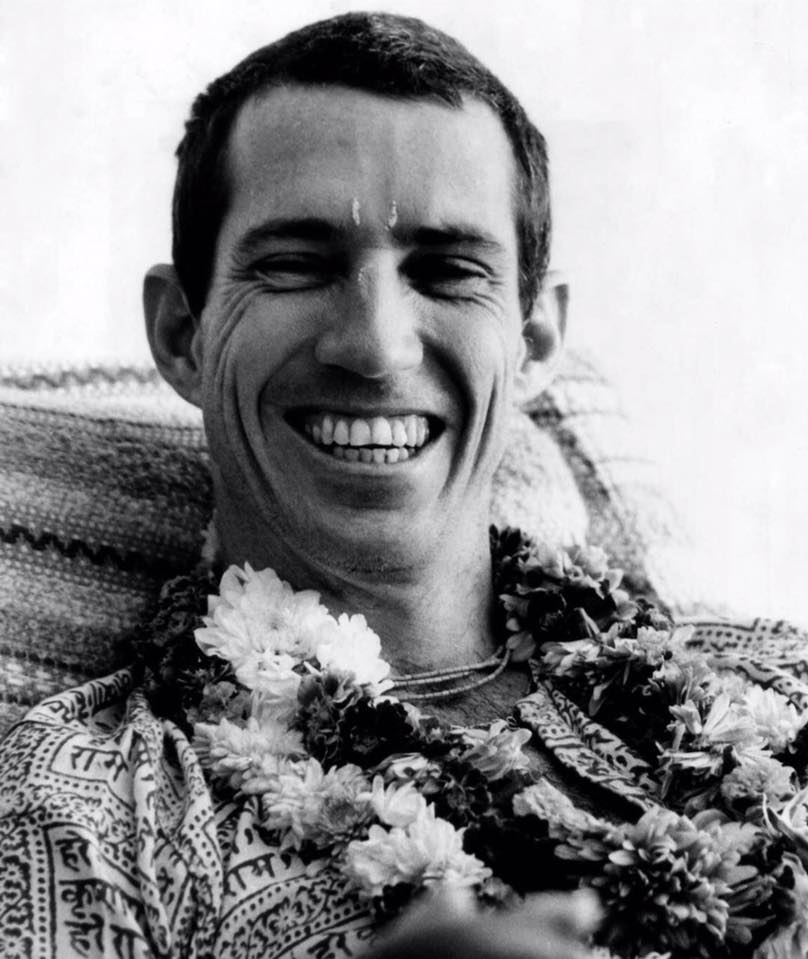
Siddhaswarupananda quickly realized that the Absolute Truth had three aspects – the impersonal Brahman effulgence, the Paramatma or partial expansion of the Lord Who guides us from within the heart, and the Personality of Godhead, Lord Krishna, Who is the cause of all causes – the source of all spiritual and material energies. He understood that the ocean of spiritual light was the bodily effulgence springing from the Supreme Person, and that the happiness of merging with this spiritual effulgence was miniscule compared to the unlimited ananda or bliss of having an eternal loving relationship with the Supreme Person. Siddhaswarupananda wanted everyone to experience this greatest of all pleasures. He became an initiated disciple of Srila Bhaktivedanta Swami, and since the early seventies he has taught this wonderful spiritual process, initiating his own disciples after Bhaktivedanta Swami left this world in 1977.
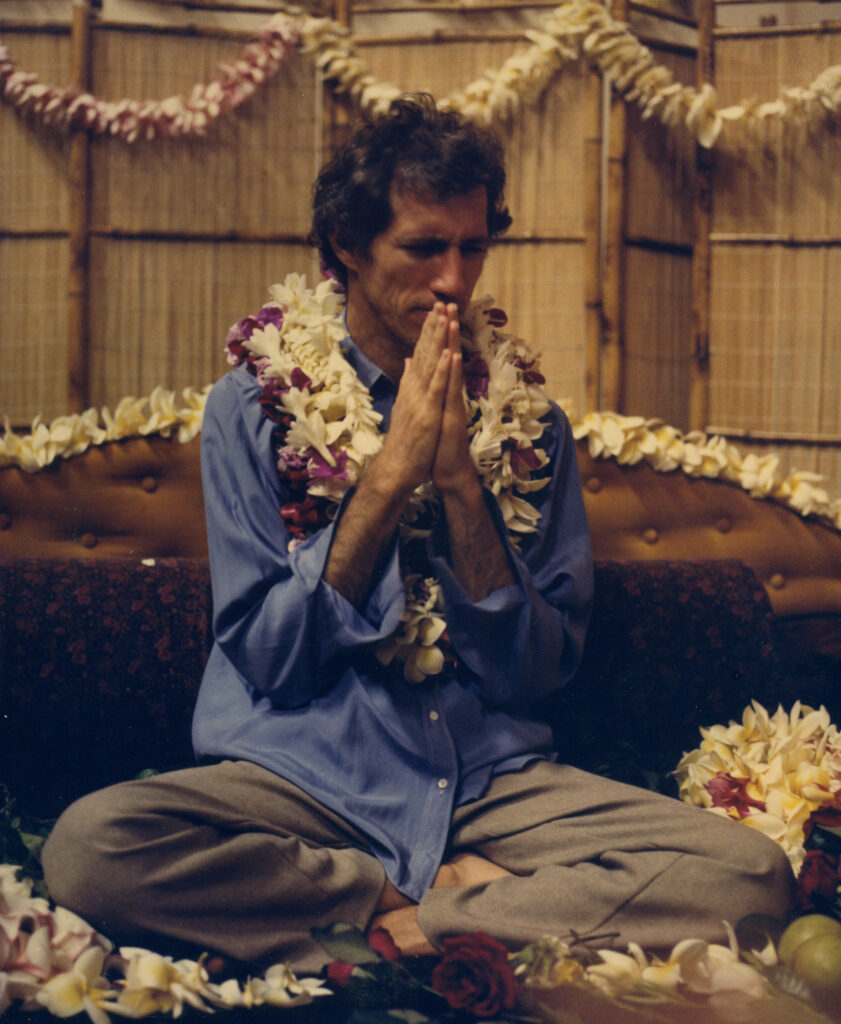
The Supreme Person, Krishna, has an aura or halo which is so vast and limitless that it surrounds the entire spiritual world. It is sometimes called the ocean of light, and some yogis who are not aware of God’s personality and personal form, see the goal of life as merging into this ocean of light. But a devotee of God, one who wants to know and love the Supreme Person, is not very interested in this impersonal aspect of God. They think it is amazing because it springs from Krishna, but they don’t want to go there because when one is merged in the ocean of light they cannot know or remember Krishna. They lose all awareness of their personality and individuality in the merged condition. Therefore, devotees sometimes pray to the Lord to remove this dazzling effulgence so that they can see Krishna’s beautiful personal form:
O my Lord, O primeval philosopher, maintainer of the universe, O regulating principle, destination of the pure devotees, well-wisher of the progenitors of mankind – please remove the effulgence of Your transcendental rays so that I can see Your form of bliss. You are the Supreme Personality of Godhead, like unto the sun (luminous), as am I.
[Sri Isopanisad mantra 16]
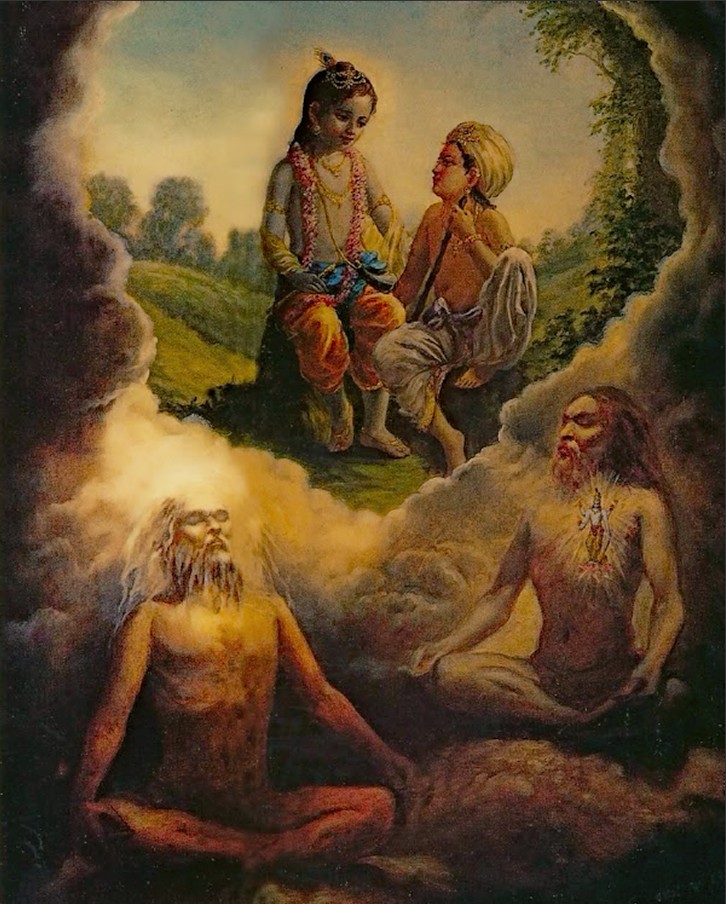
In the above picture, the impersonalist yogi on the left is meditating in the attempt to merge with Krishna’s bodily effulgence. The yogi on the right is meditating on the Paramatma or Lord in the heart. And above them is the Supreme Person, who is the source of Brahman and Paramatma, and who enjoys loving pastimes in His spiritual abode. So, the Vedic yoga texts describe the Absolute Truth, or God, as having these three distinct features, which may be realized by transcendentalists with different degrees of spiritual realization:
What the Upanishads describe as the impersonal Brahman is but the effulgence of His body, and the Lord known as the Supersoul is but His localised plenary portion. He is the Supreme Personality of Godhead, Krishna Himself, full with six opulences. He is the Absolute Truth, and no other truth is greater than or equal to Him.
[Caitanya-caritamrta Adi 1:4]
The six opulences of the Supreme Person are all knowledge, all beauty, all strength, all wealth, all fame and all renunciation. People in this world are attractive to us because they may have some beauty, some wealth, some fame, some knowledge, some strength or some renunciation or humility. It is these qualities which make a person attractive. But only God, has all of these qualities in perfect fullness. Therefore, He is called Krishna, which means The All-attractive One. The greatest transcendentalists know all three features of the Absolute Truth, but their attraction and love is for Lord Krishna’s personal feature, for He is the reservoir of all attractive qualities. In Bhagavad-gita and Srimad Bhagavatam the transcendental spiritual form and personality of the Supreme Person is clearly described:
One should meditate upon the Supreme Person as the one who knows everything, as He who is the oldest, who is the controller, who is smaller than the smallest, who is the maintainer of everything, who is beyond all material conception, who is inconceivable and who is always a person. He is luminous like the sun and, being transcendental, is beyond this material nature.
[Bhagavad-gita 8:9]
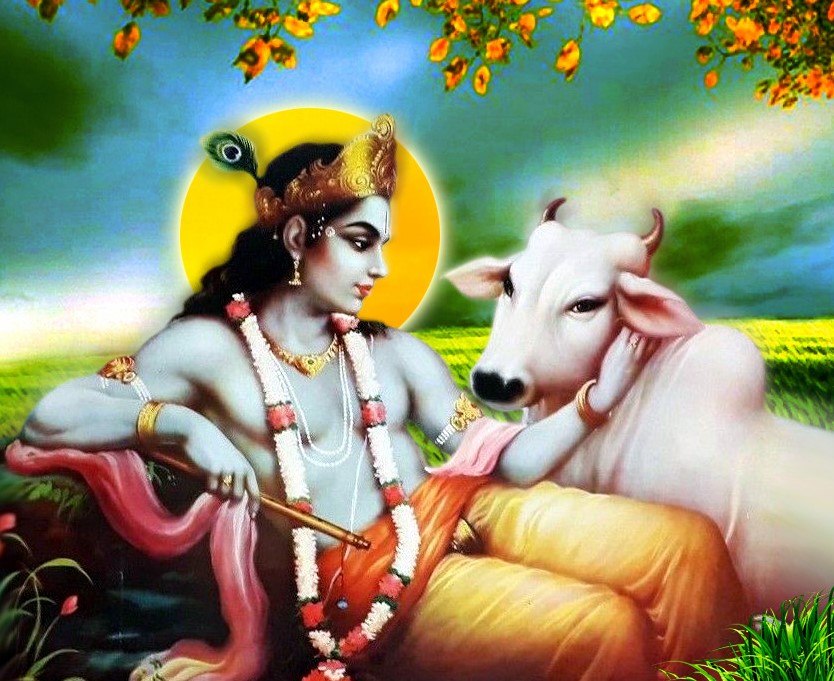
My transcendental body (sac-cid-ananda vigraha) looks exactly like a human form, but it is not a material human body. It is inconceivable. I am not forced by nature to accept a particular type of body; I take on a body by My own sweet will. My heart is also spiritual, and I always think of the welfare of My devotees. …
[Srimad Bhagavatam 5:5:19]
The Vedic yoga texts make it very clear that the silent meditation process of astanga or kundalini yoga is too difficult and not recommended for the modern age. When we hear about the lives and activities of great yogis and sages in past ages, in sacred texts such as the Bhagavad-gita and Srimad Bhagavatam, we can realize how difficult the astanga-yoga system of silent meditation is to practice successfully.
To have any chance of real success in astanga or kundalini yoga, a person needed to be totally celibate and fast or live on very small amounts of food. Anyone who claims to be teaching kundalini yoga but doesn’t tell his students they must be celibate is a charlatan. The mystic yogi would live away from family members, either alone in the forest or in a hermitage where they could sit for sixteen or eighteen hours-a-day alone in meditation, undisturbed by other people, loud noises, wild animals, mosquitoes or anything else that could turn the mind’s focus away from the meditation process.
When taught this process in the Bhagavad-gita, Arjuna said:
O Madhusudana, the system of yoga which you have summarized appears impractical and unendurable to me, for the mind is restless and unsteady. For the mind is restless, turbulent, obstinate and very strong, O Krishna, and to subdue it is, it seems to me, more difficult than controlling the wind.
[Bhagavad-gita 6:33-34]
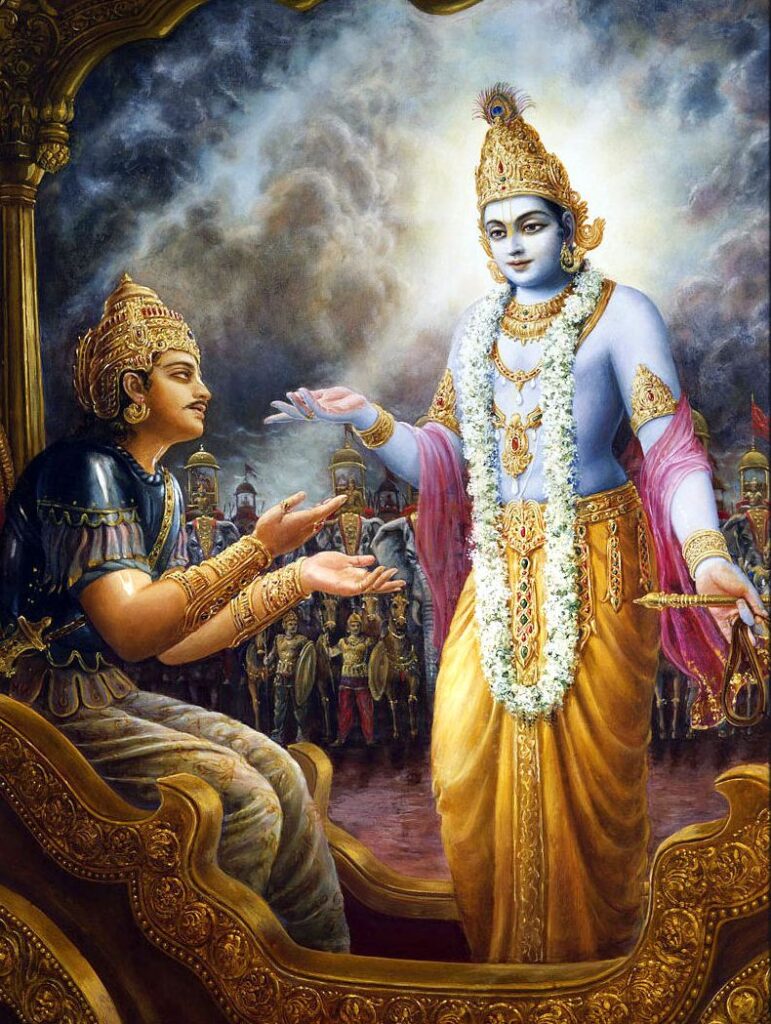
So, if a greatly elevated saintly person like Arjuna found this process so difficult, the reality is that very few people in this age can successfully practice the mystic yoga system. Who can seriously live without working, away from family and friends, in complete celibacy, sitting quietly in meditation almost all of their waking day for years on end? Who can even find a quiet place to practice such austerities? Or a genuinely qualified teacher who can guide them through this process.
And if by the unlikely chance they were able to awaken their kundalini and move their life force up the sushumna, passing through the chakras, the pain of this process is excruciating, and has been likened to stabbing a red-hot knife along the length of the spine. The skin can actually blister as the kundalini fire moves up the chakras. It is an extremely difficult and painful process, requiring immense austerity and determination, great physiological prowess and prolonged detachment from the world. It is not something that can be achieved by someone who sits with their eyes closed for an hour a day and then goes off into the world. The astanga yoga process is not possible for almost everyone in this age.
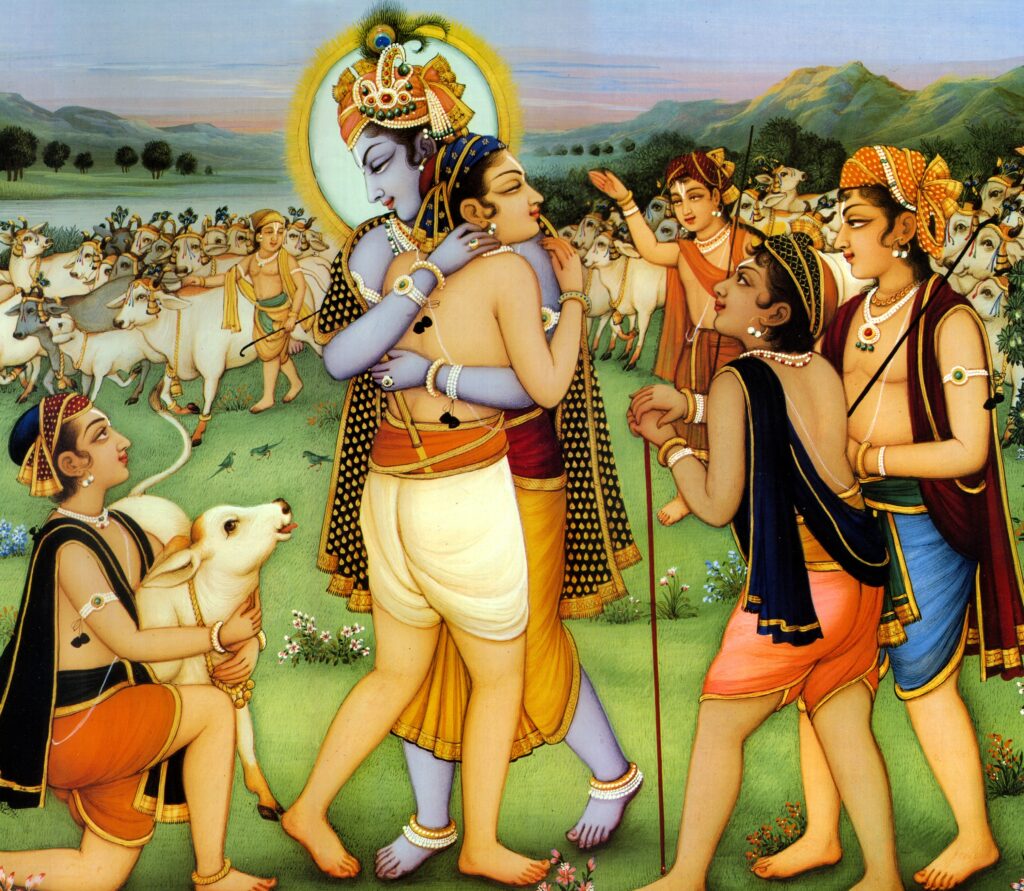
But most importantly, it cannot satisfy the innermost need of the spirit soul to experience the perfect happiness of loving the Supreme Person, Who is our long-lost dear-most friend. This is the real meaning of yoga – the loving union of the individual soul with the Supreme Soul. And amazingly, the process of yoga taught by Lord Chaitanya, and recommended for this day and age is far simpler and more practical. It is also very enjoyable, and in fact dovetails all of our needs. We can work and have a normal family life and still practice kirtan, getting together with others to sing the holy names of the Lord. And everything we need is there.
We all want to socialize and have friends. We can dovetail this desire by associating with good-hearted and like-minded people who share the same desire for living a spiritual life. We can dovetail our desire to hear and play music by meditating on the transcendental sound of the Lord’s holy names. With kirtan, even young children can take part without creating a disturbance to the meditation. And we can enjoy delicious and nutritious vegetarian food which is spiritually purifying because it has first been offered to the Supreme Lord.
In the Brihan-Naradiya Purana, it is said that in the present age when society is overcrowded and the atmosphere is disturbed, with many people struggling so hard just to survive, the best means of spiritual realization is chanting the holy name of the Lord:
harer nama harer nama harer namaiva kevalam
kalau nasty eva nasty eva nasty eva gatir anyatha
In this age of quarrel and hypocrisy the only means of deliverance is chanting the holy name of the Lord. There is no other way. There is no other way. There is no other way.
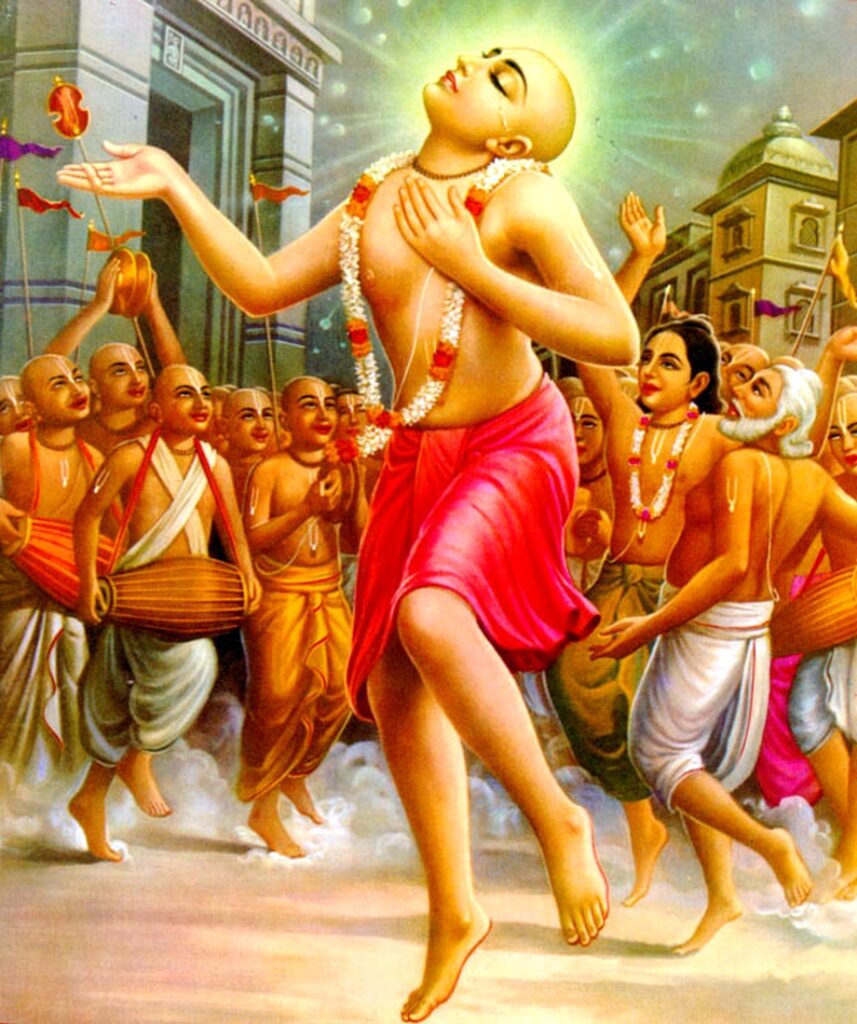
My dear King, although Kali-yuga is an ocean of faults, there is still one good quality about this age: Simply by chanting the Hare Krishna maha-mantra, one can become free from material bondage and be promoted to the transcendental kingdom.
[Srimad Bhagavatam 12:3:51]
The religious practice for the age of Kali is to broadcast the glories of the holy name. Only for this purpose has the Lord, in a yellow colour, descended as Lord Chaitanya.
[Caitanya-caritamrta Adi 3:40]
The holy name of Krishna is transcendentally blissful. It bestows all spiritual benedictions, for it is Krishna Himself, the reservoir of all pleasure. Krishna’s name is complete, and it is the form of all transcendental mellows. It is not a material name under any condition, and it is no less powerful than Krishna Himself. Since Krishna’s name is not contaminated by the material qualities, there is no question of its being involved with maya. Krishna’s name is always liberated and spiritual; it is never conditioned by the laws of material nature. This is because the name of Krishna and Krishna Himself are identical.
[Padma Purana. Quoted C.c. Madhya 17:133]

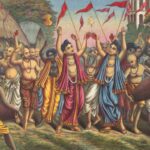
Leave A Reply